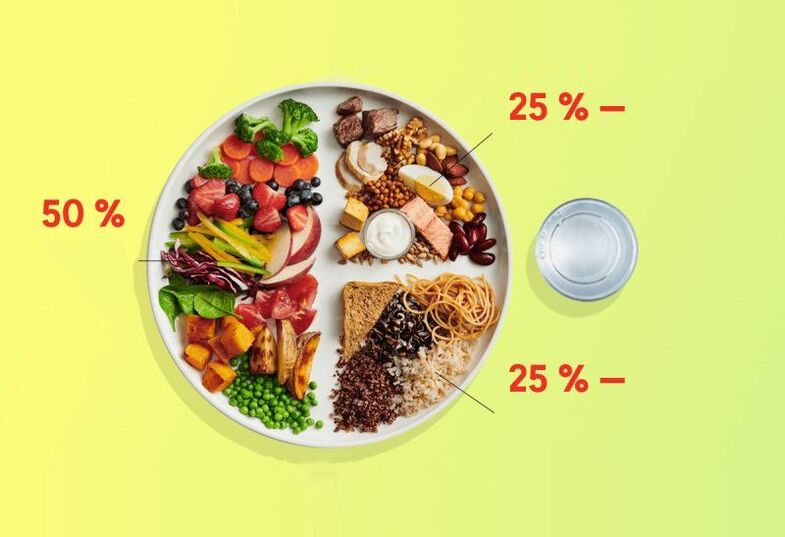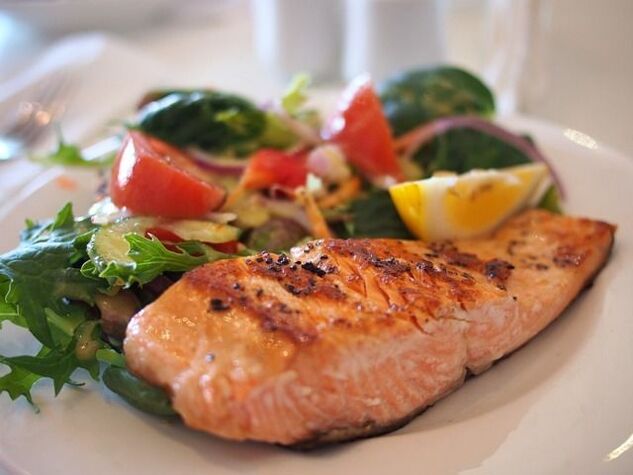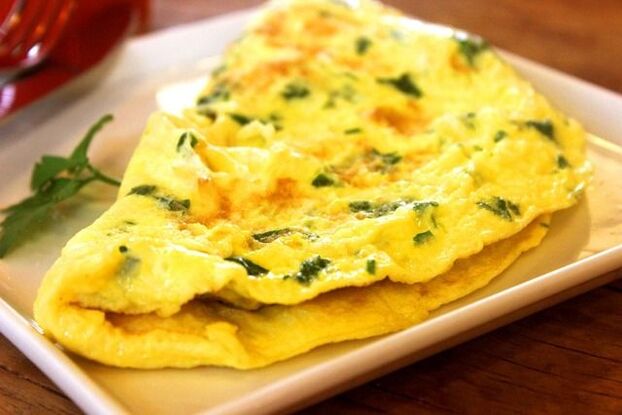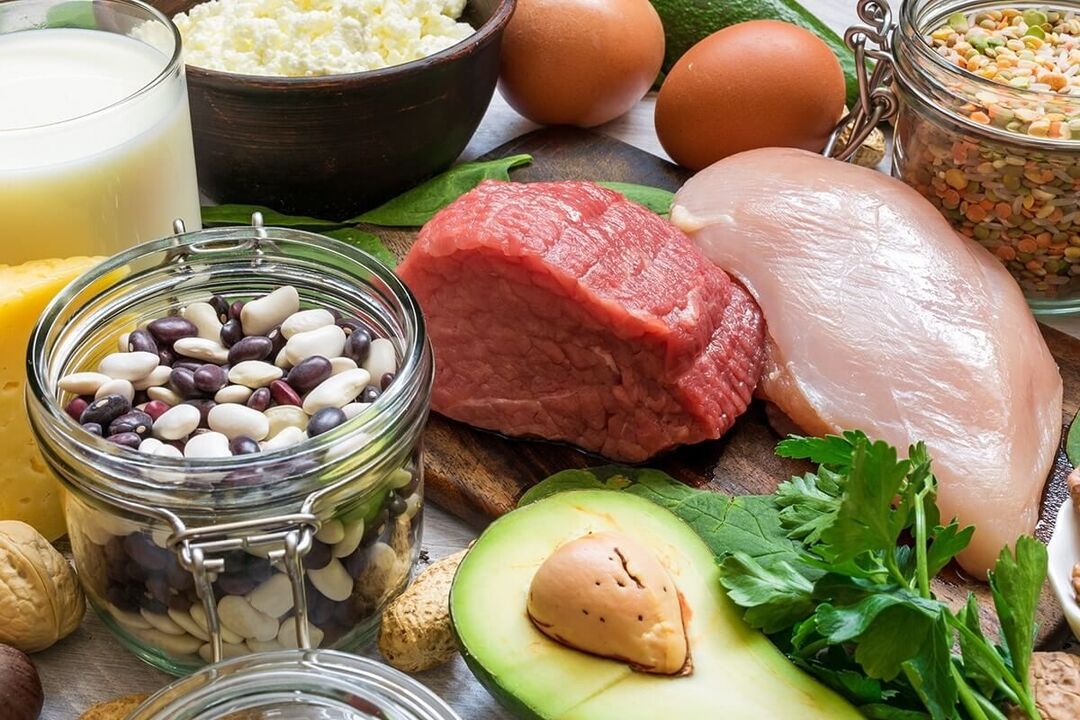
Proper nutrition for weight loss: general rules
- Follow the system. Eat at specific times, leaving 3-4 hours between meals.
- Drink plenty of fluids. Water can speed up metabolism, eliminate toxins, and promote food absorption.
- Eat a diverse diet. The diet includes foods containing proteins, carbohydrates, lipids, vitamins and minerals.
- Balanced diet. When compiling the menu, observe the proportions of BJU. Increase your consumption of fresh vegetables and fruits. Plant foods are rich in vitamins and fiber and help to purify the body without losing important trace elements.
- Count calories. For harmless weight loss, a daily calorie intake of 1300 calories is recommended for women and 1600 calories for men.
- Reduce consumption of animal fats and fast carbohydrates. Misuse of these types of nutrients increases the risk of obesity and endocrine diseases.
- Refuse to drink alcohol. Alcohol damages physical and mental health.
Healthy Eating: Food List for Weight Loss

- Water, consume about 1. 5 liters + liquid dishes (soups) per day;
- Meat: Poultry, beef, veal;
- Fish: Bass, haddock, salmon;
- Seafood: squid, mussels;
- quail and eggs;
- Cereals: buckwheat, bulgur, rice;
- legumes;
- Dairy products with added lactic acid bacteria: fermented milk, yogurt, kefir;
- Garden crops, root crops;
- Fruits of trees and shrubs;
- greening;
- Nuts and seeds limited.
Plan a healthy meal menu
- Daily system. It has been a long time since people got up and slept in the sun. A high proportion of men and women work at night. There are also "owls" and "larks". These factors are crucial in planning breakfast and dinner.
- diet. Before you can create a proper nutritional menu, you need to determine your goals. There is one diet to control your weight and another to stay healthy. If you need to lose more than 5kg, the menu is limited, but you won't lose a lot of weight.
- Visual plan. Meal planning is done on a weekly basis and by the hour. Entering data into a form is more convenient. This will allow you to monitor quality and quantity. The easiest way is to download a special application.
- Smooth transition. The changes are going well. Severe calorie restriction often produces the opposite results. When nutrients are lacking, the body stores them in the form of fat deposits. It is enough to eliminate harmful foods for the first week.
Men's Weekly Menu: Specials

- Hearty breakfast. Men spend an average of 1/3 more energy than women. Breakfast "starts" the body. A man's breakfast should be rich. Contains animal protein, simple sugars, monosaccharides, and lipids. The latter provides energy.
- Dinner is a serious affair. Eat dinner 2 hours before going to bed. Product group and calorie content depend on many factors. During intensive training in the evening, you should replenish the resources consumed - protein and carbohydrates (mainly disaccharides and polysaccharides) in the correct proportions.
- Calculate your protein intake strictly. Proteins are the building blocks of tissues. People with a stronger libido should consume larger amounts than women. But excess protein can lead to increased uric acid formation, which can lead to kidney and joint disease.
- Fat. Lipids play an important role in the formation of steroids. The standard daily intake for men is 25-30% of all nutrients. In addition, the consumption of vegetable fats is also minimized. They contain alpha-linoleic acid, which increases the risk of prostate adenomas.
- Vitamins and minerals. Zinc and iodine are important for men's health.
Approximate menu for losing 1, 500 calories a week

| sky | breakfast | dinner | dinner |
| I | Omelette, porridge | soup, grilled brisket | Steamed potatoes with salmon, kefir |
| two | Oatmeal, cheese, coffee | Mushroom soup, buckwheat, bread | cheese, yogurt |
| three, | Cheese, yogurt, cereal | Peppered Grilled Trout | Asparagus Herbs, Fermented Roasted Milk |
| No. 4 | Seaweed salad, tea | Lenten pickles, pasta | Boiled chicken breast, lettuce, juice |
| V | boiled eggs, buckwheat | Haddock, roasted dried fruit, rice | cheese, apple |
| six, | Oatmeal, tea and milk | Eggplant and tomato stew | Yogurt, pineapple |
| seven | cheese, orange | bean soup, boiled turkey | Vinegar juice, juice |
This week’s food menu (table) and recipes
| day of week | breakfast | dinner | dinner |
| on Monday | apple, 2 loaves of bread | Vegetable puree soup, steamed potatoes | Ham, grapefruit |
| Tuesday | Yogurt, cheese, tea | Beetroot soup and rice | Steamed fish, vegetable juice |
| Wednesday | Cereal, banana | Barley porridge, boiled veal | Fresh vegetable salad, tea |
| Thursday | Yogurt, low-fat hard cheese | vegetable soup, apple | Steamed Cauliflower |
| Friday | Corn flakes, juice | potato chips, bread | kefir, strawberry |
| Saturday | Herb Omelette, Chicory | Tilapia fillet, cucumber, pepper | Ryazhenka, oatmeal cookies |
| Sunday | Vegetable casserole, tea | Sorrel Soup, Turkey Meatballs | cheese, cucumber |
The right nutritional menu for losing weight in a week
The basic principle

- Eliminate prohibited foods and beverages from menus.
- Drink an appropriate amount of water every day (30ml per 1kg of body weight).
- Maintain daily caloric intake (from 1200 kcal to 1600 kcal). To calculate the energy value of a food, use a calorie table.
- The content of BJU in the daily menu should be 40-45% protein, 15-20% fat and 30-40% carbohydrate.
- Use the plate rule: half of your main meal should be vegetables, one-quarter each protein (meat, cheese) and carbohydrates (grains).
- Fruits are allowed before 16 o'clock, and sweets (honey, dried fruits) are allowed before 12 o'clock.
- Avoid overeating, as eating more food can increase daily caloric intake and slow down the weight loss process.
- Eat food slowly and chew it thoroughly to promote proper absorption of nutrients.
- Control your salt intake as excess salt can cause swelling.
What you can and cannot eat (table)

| flour products | |
| Baked with whole wheat, rye, buckwheat, almond, oat flour, no sugar added | White bread and sweet pastries made from high-quality wheat flour |
| Meat | |
| Lean pork, rabbit, beef | Fatty pork and beef. sausage |
| bird | |
| chicken, turkey | duck, goose |
| fish and seafood | |
| Cod, cod, salmon, pike, zander, mullet, pink salmon, tuna, mackerel, herring, trout, herring, pollock. Seaweed, shrimp, oysters | Salted fish, smoked fish, canned food, crab sticks |
| Egg | |
| cooked, in the form of an omelette, as part of a dish | |
| dairy products | |
| Cottage cheese (1-8% fat), kefir, yogurt, low-fat sour cream | Fatty cottage cheese, sour cream, cream. Store-bought yogurt, glazed cheese with add-ins |
| cereals | |
| Green and brown buckwheat, bulgur, pearled barley, Artek cereal, rolled oats, brown rice. Peas, chickpeas, mung beans, lentils, broad beans | Instant oatmeal, sugar cereal, white rice, semolina |
| Oil | |
| Olive oil, flaxseed oil, coconut oil, sunflower oil and other types of vegetable oils. butter and ghee | Margarine, mayonnaise |
| vegetable | |
| Cucumbers, tomatoes, carrots, onions, cabbage, red cabbage, Chinese cabbage, cauliflower, eggplant, avocado, zucchini, bell peppers, spinach, lettuce, spinach, parsley, dill. Sauerkraut | Protect. mashed or fried potatoes |
| fruit | |
| Apples, pears, plums, raspberries, cherries, strawberries, cherries, gooseberries, mulberries, peaches, oranges, tangerines, grapefruits, apricots, kiwis. Limit: Banana (1 per day), grapes | |
| Dried fruits and nuts | |
| Walnuts, cashews, hazelnuts, nutmeg, pistachios, almonds (not more than 20 grams per day). Plums, dates, figs, apricots, mangoes, dried apricots (not to exceed 25 grams per day) | Lots of peanuts, raisins and dates |
| dessert | |
| honey, date syrup, sweetener, dark chocolate | Sweets, ice cream, candies, milk and white chocolate, biscuits |
| drinks | |
| Black, green, mint, chamomile tea, coffee, chicory, sugar-free barley drink | Alcohol, sweet carbonated drinks |
How to create a menu
- Daily intake of protein (1-1. 5 grams per kilogram of body weight) distributed throughout the day;
- For breakfast, it is recommended to prepare dishes composed of proteins and slow carbohydrates to create a long-lasting feeling of satiety, such as omelets and porridge, curd oatmeal, etc.
- Lunch should include protein, carbohydrates and green vegetables to provide the body with vitamins and fiber;
- The number of meals per day is calculated individually based on daily life situations;
- You should not eat without feeling hungry because eating healthy foods can lead to overeating even when there is no physiological need.
Healthy and nutritious menu this week

on Monday
- Breakfast: Whole wheat bread sandwich, boiled eggs, hard cheese, coffee and milk;
- Lunch: Turkey steak, wheat stew, vegetables, apples;
- Afternoon snack: Cheese casserole with berries;
- Dinner: Chicken salad with cucumber and cabbage.
Tuesday
- Breakfast: cheesecake (use banana instead of sugar), sour cream, tea or coffee;
- Lunch: tuna salad, banana;
- Afternoon snack: liver pancakes, tomato and cucumber salad;
- Dinner: Grilled salmon with broccoli.
Wednesday
- Breakfast: rye bread, avocado, cheese, coffee and milk;
- Lunch: roasted turkey slices, boiled buckwheat, fresh cucumber, kiwi fruit;
- Afternoon snack: vegetable rolls made with whole wheat flour;
- Dinner: Cheese and egg white casserole.
Thursday
- Breakfast: Whole wheat pancakes, cheese and berries;
- Lunch: chicken tenders, durum wheat pasta, tomato cheese salad, pears;
- Afternoon snack: baked apples and peaches;
- Dinner: Boiled shrimp, lettuce, eggs, onions and lemon juice.
Friday
- Breakfast: 3-egg omelet with tomatoes, green tea;
- Lunch: roasted turkey with zucchini and bell peppers, quinoa, cherries;
- Afternoon snack: banana and tofu puree;
- Dinner: Salmon and cauliflower pie.
Saturday
- Breakfast: Rye bread sandwich with cheese and avocado, coffee;
- Lunch: boiled shrimp, brown rice, cabbage salad, apple;
- Afternoon snack: cheese, yogurt and nuts;
- Dinner: Grilled mushrooms, salad.
Sunday
- Breakfast: oatmeal, cheese and nuts;
- Lunch: Steamed chicken steak, chicken wings with vegetables and fruits;
- Afternoon snack: Greek berry yogurt;
- Dinner: halibut, salad.
Is it possible to lose weight with proper nutrition?
consequences of malnutrition
Basic Principles of Proper Nutrition: Important Tips
- The menu should include products that meet certain physical needs. Their lack may trigger cravings for junk food, as scientists have shown that unhealthy cravings for certain junk foods may be linked to deficiencies in certain micronutrients.
- The caloric content of food should be controlled. Maintaining energy balance is important as it determines optimal body weight. Menus should focus on plant-based foods that contain high amounts of dietary fiber. These are green vegetables, citrus fruits, apples, peaches, pears, seeds and nuts, and whole grains.
- When creating your menu, you should choose products with the least amount of sugar and fat. Normal sugar intake is up to 50 grams per day, but ideally you will need to reduce your sugar intake further. The amount of fat per day should not exceed 70 grams. A healthy menu should completely exclude the presence of trans fats - they are present in products containing hydrogenated vegetable oils.
- The best drinks on a healthy menu are those with the lowest calorie content (green and herbal teas, rosehip drinks, etc. ). You should not drink too much juice - the daily dose should not exceed 200 grams.
- A certain amount of five types of food should be consumed every day to ensure an ideal balance of nutrients and sufficient energy "supply" in the body. The first group of products are vegetables and legumes (approximately 300 g and 70 g per day respectively). The second one is berries and fruits (300 g). The third group is lean meat and fish, eggs, seeds and nuts (1 serving of meat or fish dish, 2 tablespoons of nuts or seeds). The fourth group is cereal products that retain the maximum dietary fiber (whole grain products, porridge, about 70 grams per day) and the fifth group - low-fat milk and fermented milk products (about 200 grams per day).
- It's also important to limit salt intake and salty foods. It is recommended that the daily salt intake should not exceed 5 grams.
- Diet is also important. So, eat breakfast within an hour after waking up and have dinner three hours before going to bed. It is important to offer two nutritious snacks during the day to avoid severe hunger and therefore overeating during the main meal.
- You should make sure you drink enough fluids every day. It is recommended to drink a glass of warm water half an hour before meals.
- Convenience foods may be economical, but they are never health foods. They should be completely abandoned. You should also exclude sodas, fast food, sausages, snacks, etc.
- It is recommended to eat carbohydrate meals during the first half of the day and protein meals during the second day.
Healthy food menu for the family for the week

Proper nutrition, a weekly menu
on Monday
- Lunch: grilled fish – 200 g, vegetable salad (cabbage or green leafy vegetables with olive oil) – 150 g
- Afternoon snack: low-fat cottage cheese – 100 g, dried fruits – 50 g, tea.
- Dinner: 200 grams of stewed vegetables and 150 grams of boiled chicken fillet.
Tuesday
- Lunch: vegetable or chicken soup - 200 g, cucumber, tomato or cabbage salad - 200 g.
- Afternoon snack: fruits and herbal tea of your choice.
- Dinner: lean meat (chicken, rabbit, veal) - 250 g, cucumbers - fresh or pickled.
Wednesday
- Snacks: nuts – 50 g, apple, tea.
- Lunch: lean meat pilaf - 200 grams, stew - 150 grams.
- Afternoon snack: cheese casserole – 150 g, tea.
- Dinner: Boiled or baked cod – 200 g, cucumber, tomatoes.
Thursday
- Breakfast: rice with milk – 150 g, berries or fruit – 100 g.
- Snacks: yogurt – 100 g, dark chocolate – 10 g, coffee.
Friday
- Breakfast: Whole wheat porridge of your choice – 200g, boiled eggs, cucumber.
- Snacks: kiwi fruit, 25 grams of nuts, tea.
- Lunch: Mushroom soup with rice - 250 grams, toast with 10 grams of hard cheese.
Saturday
- Breakfast: two egg omelet, coffee.
- Snacks: Oranges and bananas.
- Lunch: baked potatoes with skin, 100g boiled chicken fillet, cucumber.
- Afternoon snack: 200 grams of yogurt, apple.

































